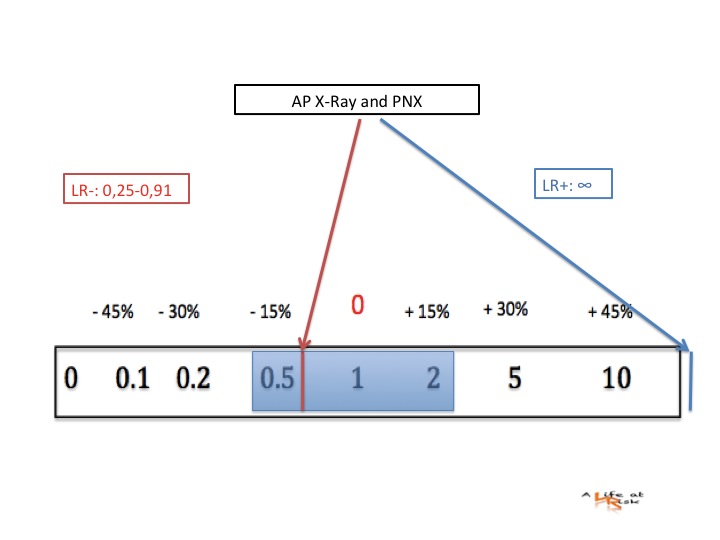Y ou are alerted for a level 3 trauma coming from the mountain, a cyclist has fallen going down hill.
You prepare the shock room with everything you may need, dress up, and wait.
A 25 y/o cyclist arrives completely immobilized, you immediately start to perform ABCDE as you learned in your recent ATLS course (…you feel confident).
First stop is a possible problem in “B” (breathing): he has an ecchimosis on the right emithorax, not crepitation, maybe there is a less vescicular murmur on the same side, but you are not sure (the shock room is very crowded an noisy!), he is slightely tachypnoic (RR is 24), O2 saturation is 96%. …you go on….in “E” (Exposure) you find an exposed, bleeding, thigh bone fracture that surly is going to need surgery, at the moment you stop the bleeding, stabilize, allert orthopedic…ect…
FAST is normal. You ask for X-Ray: anteroposterior (AP) chest x-ray, pelvis and thigh bone. Radiologist confirms exposed fracture, no signs of pneumothorax, surgery room is ready…
…Do you still feel confident?

Conclusion
Supine AP chest radiograph has been reported to have very poor sensitivity for the detection of pneumothorax, as low as 36% to 48% in different studies
Small occult pneumothoraces may be missed on Chest X-Ray during a busy trauma scenario…
Are you going to let this patient be intubated?
Bibliography
Acad Emerg Med. 2010 Jan;17(1):11-7.
Sensitivity of bedside ultrasound and supine anteroposterior chest radiographs for the identification of pneumothorax after blunt trauma.
Wilkerson RG, Stone MB.



